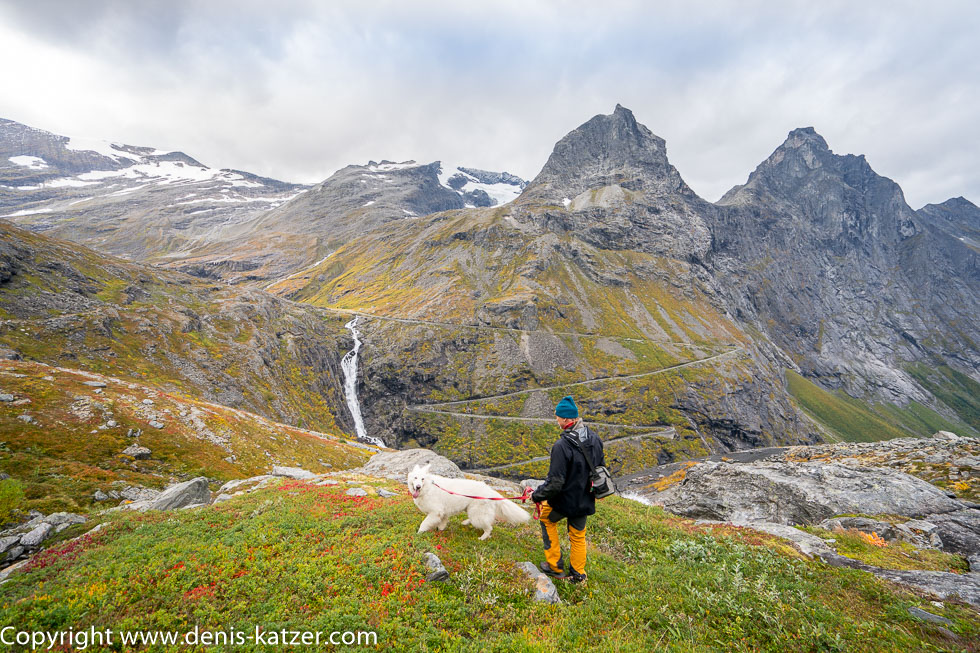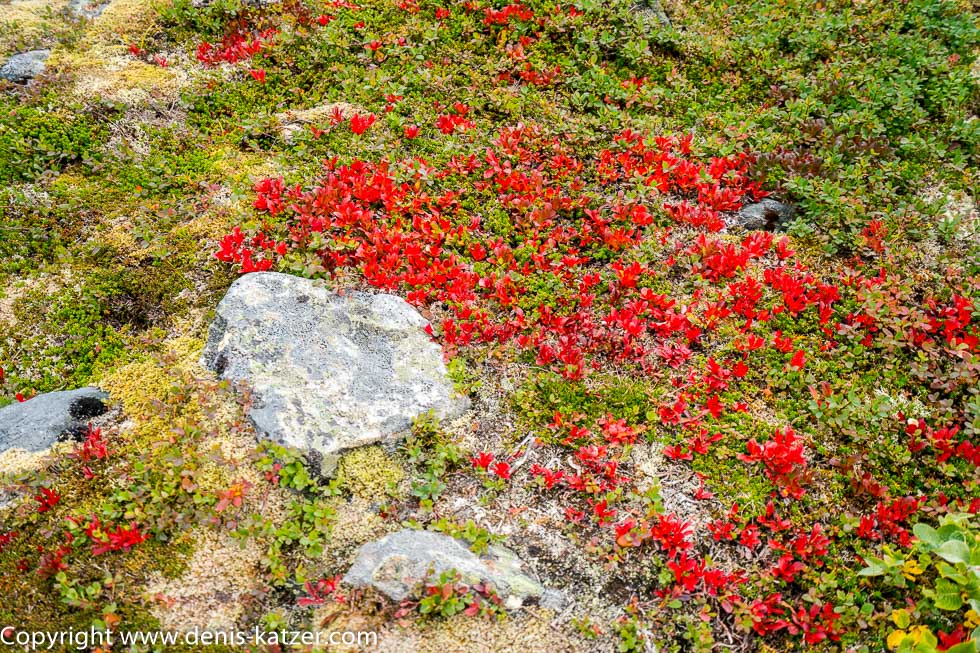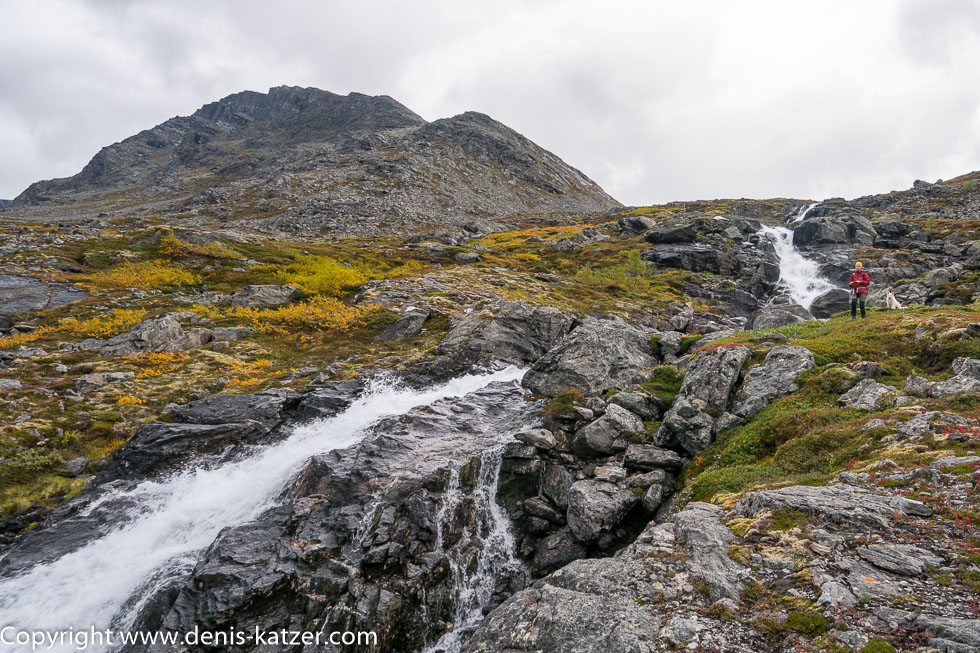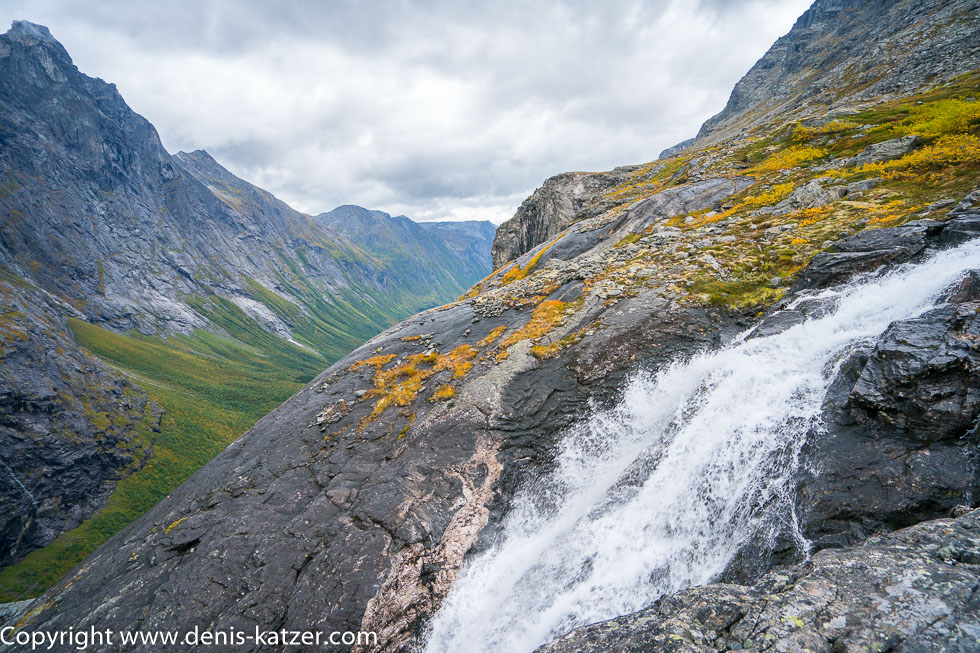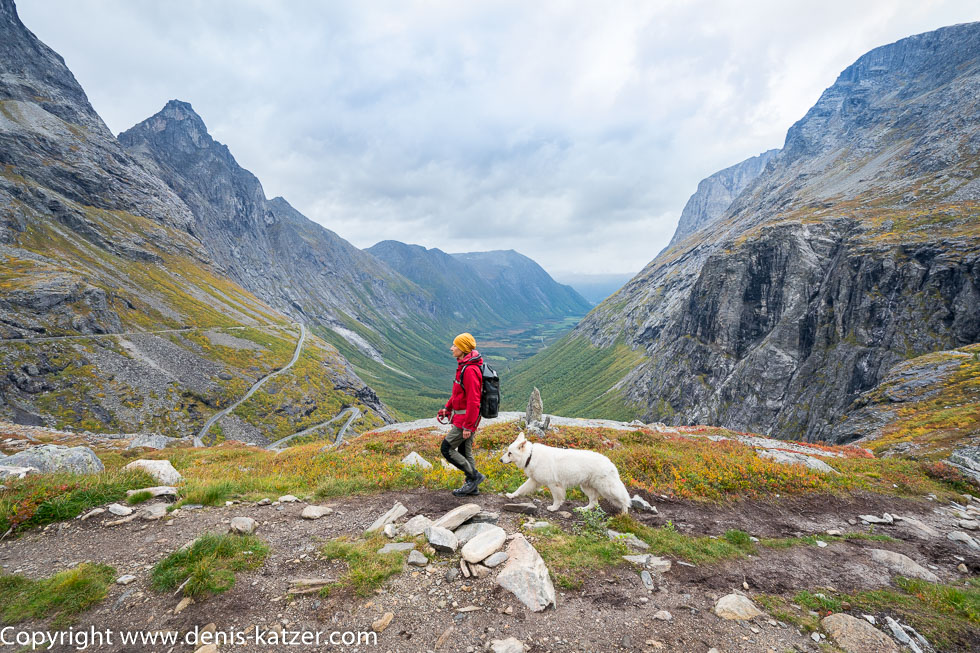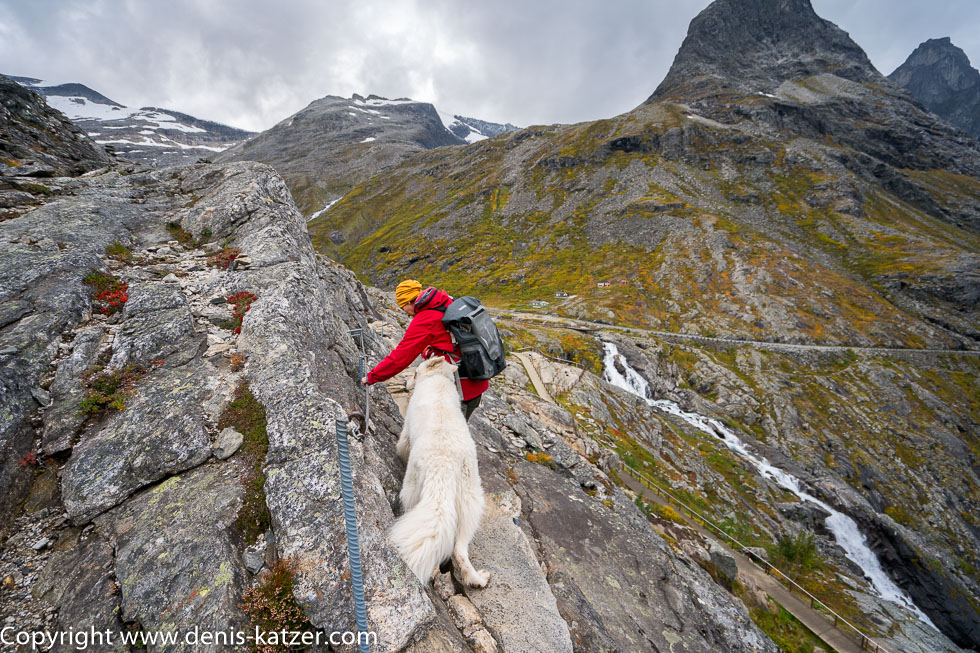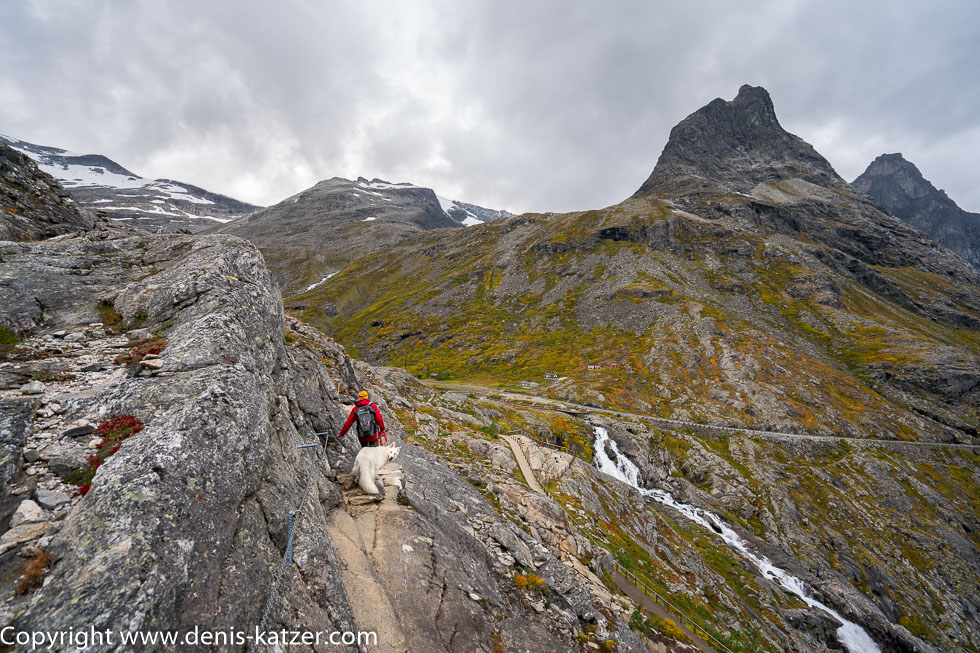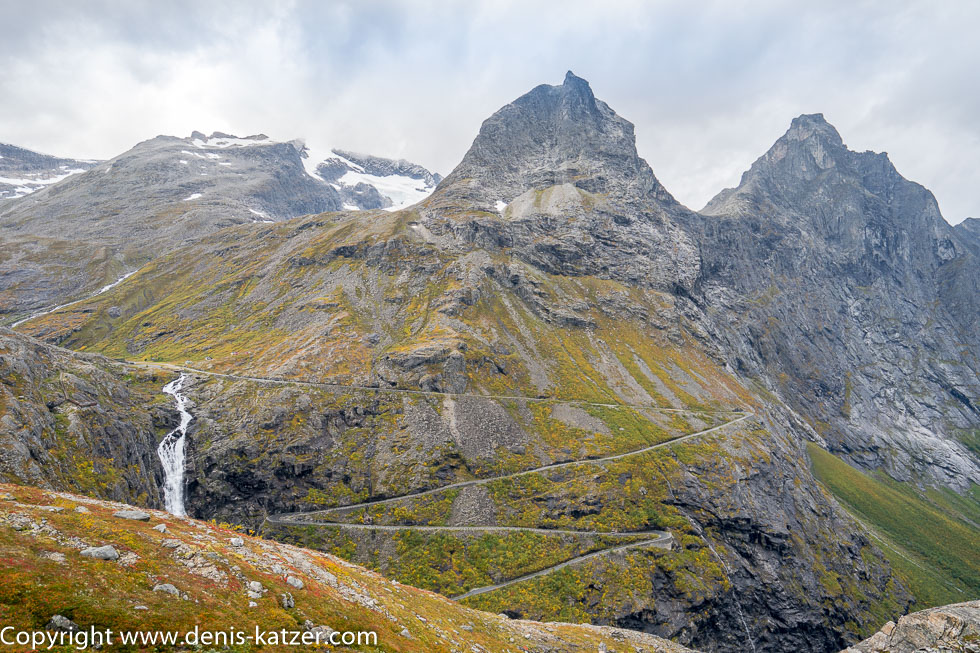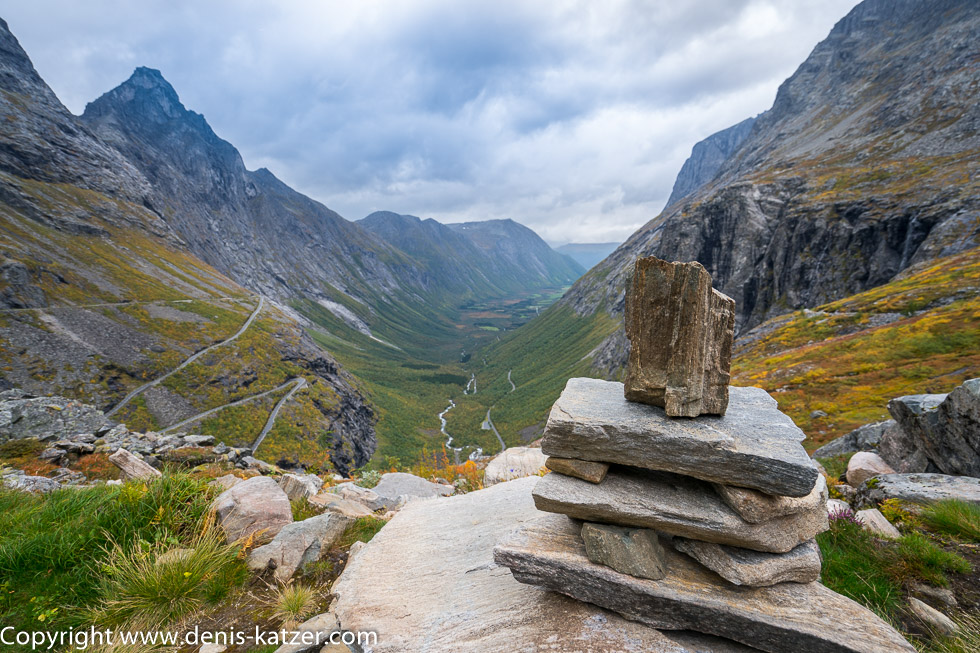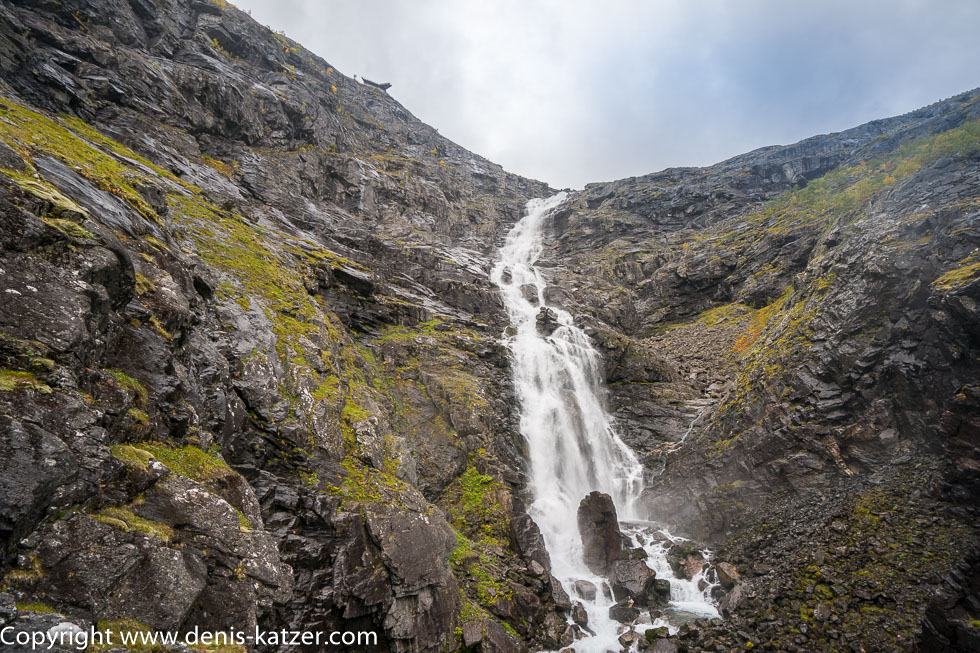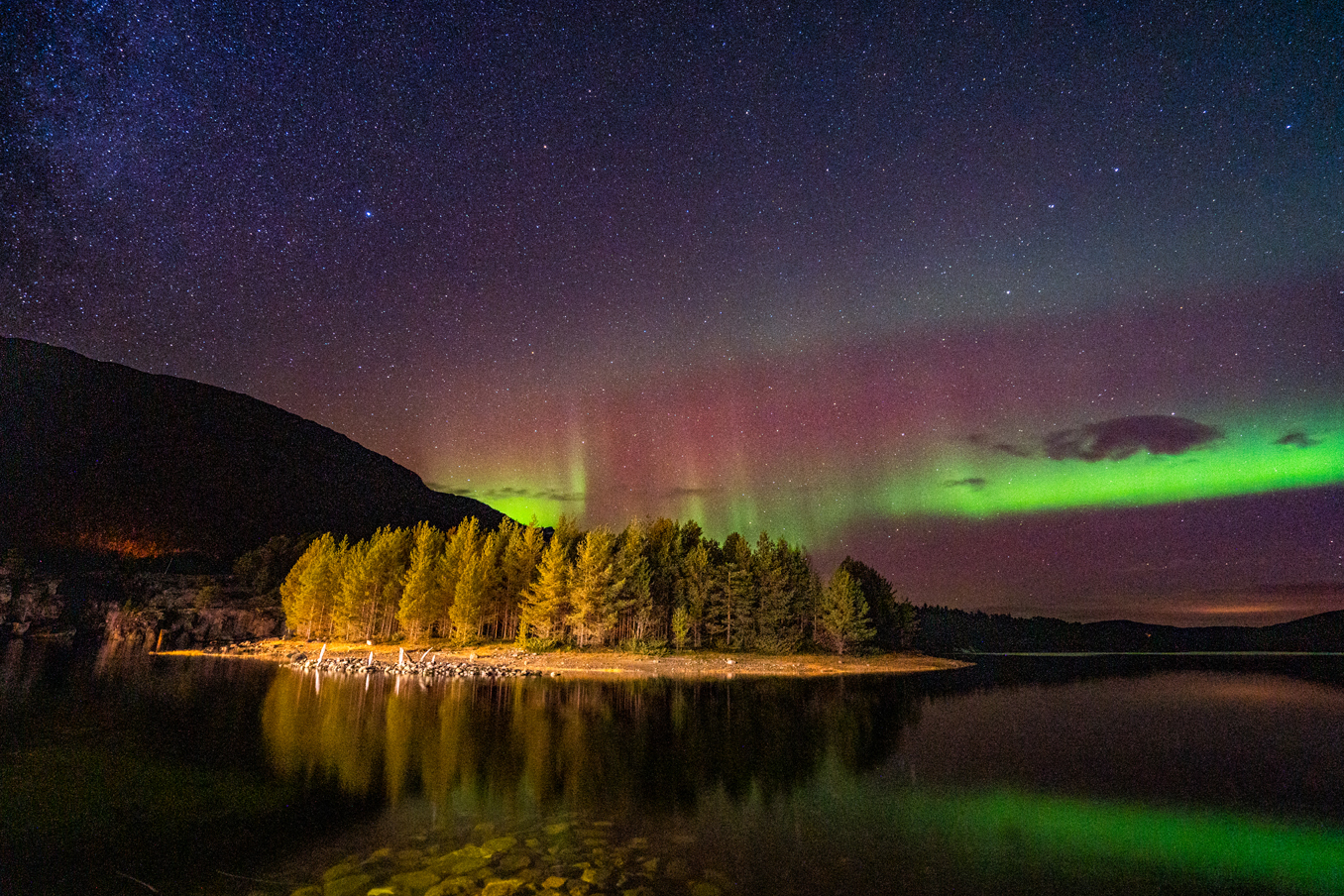
Adlerstraße – Fatal fall of a hiker
N 62°11'06.6'' E 009°29'14.6''
Date:
20.09.2020
Day: 049
Country:
Norway
Location:
Autumn Color Camp
Daily kilometers:
148 km
Total kilometers:
4041 km
Soil condition:
Asphalt
Ferry
0
Bridge crossings:
0
Tunnel passages:
2
Sunrise:
06:55 a.m.
Sunset:
7:36 pm
Temperature day max:
17°
Night temperature min:
02°
Departure:
15:00
Arrival time:
18:00
(Photos of the diary entry can be found at the end of the text).
Click here for the podcasts!
Link to the current itinerary
(For more posts click on one of the flags in the map)
“The weather forecast has hit the bull’s eye again,” I say as I open my eyes and hear the wind howling around the Terra. “Does it make sense to go on the hike in this rain?” Tanja ponders. “According to the weather app, it gets better from 10 a.m.,” I reply, glancing at my smartphone. “Then let’s decide in an hour or two,” says Tanja, slicing apples, pears and mandarins for our breakfast. The rain stops around 10.00 am. We pack our daypacks, dress warmly and leave the Terra. Just behind the viewing platforms, a narrow path leads steeply up into the Trolltindene mountain massif, which has become famous for its steep rock faces, especially the Troll Wall, which is up to 1000 meters high. We shimmy along the path secured with iron chains. Sure-footedness and a head for heights are also important prerequisites on this short hike in order to arrive back at the bottom in good health. Just ten minutes later, we are walking over golden-yellow lichen that clings to rough rocks. Dark red low shrubs grow in between, so that even up here autumn bestows the rugged mountains with its colorful splendor. “We have a fantastic view of the Trollstigen over there from the waterfall,” I say. “Be careful and please don’t go that far to the edge,” Tanja admonishes me. “I’ll be careful,” I say to myself, conscious that this rough rock won’t allow me to make a mistake. I carefully trudge over the golden-yellow bushes. I keep Ajaci, who doesn’t recognize the dangers, on a tight leash. With every meter we get closer to the waterfall, it gets louder, so loud that we can barely hold a conversation. “I’m staying up here!” says Tanja, sitting down on a rock not far from the rushing water, while Ajaci and I feel our way closer to the edge of the precipice. “Not that far! You know that a hiker fell to his death here just last year!” shouts Tanja. “It wasn’t here, it was on the Trollstigen side, but I’ll be careful. Don’t worry,” I reply. Then I sit down with my dog in the soft mesh and look down into the valley below us. Exactly opposite, on the other side of the depression, Adlerstraße winds its way up 405 meters, so that the last bend is at exactly the same height as our position. On the left-hand side of the narrow road, Stigfossen plunges 180 m into the depths. I take a few photos, detach myself from the impressive natural spectacle, climb back up a bit and sit next to Tanja on the rock. “It was worth coming here,” says Tanja, looking at the famous road that winds along the north side of the steeply sloping rock massif like a Japanese calligrapher’s brushstroke. “Absolutely,” I say loudly, trying to drown out the sound of the waterfall next to us.
We reach the parking lot again in the afternoon. Although it is already too late for long distances, we decide to continue our journey. “And if we only get 100 km, that’s a step towards the North Cape,” I say. “How far do you think it is to get there?” “That depends on how many detours we take,” I ponder. “You mean Lofoten and the island of Senja?” “Yes, exactly. But according to a rough estimate, there are still 2,500 to 3,000 kilometers to go.” “And how many kilometers have we covered since the start of the trip?” “About 4,000 kilometers.” “Not far, considering we’ve already been on the road for 1 ½ months.” “Whatever you say. We’ve seen and experienced an incredible amount in those 4,000 kilometers.” “Without a doubt. However, I didn’t mean the density of experiences, but the distance covered in relation to our desired destination. We have to factor in the return journey from up there and somehow I’m worried that the Nordic winter will catch up with us,” Tanja reflects. “Maybe, but we drive an extreme four-wheel drive vehicle that has 24 gears and three differential locks. So I’m not too worried about the winter. But anyway, let’s get going,” I say in conclusion, whereupon we stow our rucksacks in the alcove, take off our warm hiking clothes and hop into the driver’s cab.
While many visitors drive the Trollstigen from the bottom to the top, we take it the other way round because of our direction of travel. Because of the pandemic and because the travel season is coming to an end, we are almost the only ones on the road. I engage the green reduction lever. This means I can usually run our Iveco down the 12% gradient in third gear without having to brake much. If the engine still revs up to 4000 rpm, I shift down to second gear. “It’s going great!” I say happily. Slowly we steer into the depths, hairpin bend by hairpin bend. “Unbelievable, look at the boulders they used to support the road. That’s real engineering skill,” I cheer, while Tanja sits rather quietly next to me and can only share my joy to a certain extent. Heavy rain clouds are moving over the mountains at this moment. The abyss on the mostly single-lane road is right next to us. When I think that up to eight hundred thousand visitors a year supposedly come up and down here, I’m surprised that more doesn’t happen. I would love to stop for a photo, but this is hardly possible because of the narrow road. As we cross the small bridge over the outlet of the Stigfossen, which meets the rocks here after its 180 m drop, I stop in the next passing place to take a few pictures. It’s cold, the wind blows the spray over me and my expensive camera, so that I’m wet in a fraction of a second. “Uhhhaaa!” I shout, hurrying back into the terra. Five hairpin bends further on we reach the valley. We follow Provincial Road 63 through the long valley. Then we cross onto the E 136 towards Trondheim, further and further north, until we hopefully reach the destination of this journey. Although I have to say that the North Cape is only a stage destination for us. The main destination is the Northern Lights, which Tanja and I would love to see live and photograph.
I’m dog-tired after almost 150 kilometers along the roads. It is 6 p.m. when we find a spot for the night on a plateau overgrown with colorful heather and golden-yellow low trees. As I type these lines into my laptop, Tanja is preparing our dinner. “Do you think we’ll see the Northern Lights?” asks Tanja. “I hope so. It depends on the weather, of course. If it’s very cloudy and raining, we won’t see anything. It also depends on the KP value.” “What is the KP value?” “To be honest, I don’t know exactly either. Wait, I’ll Google that quickly,” I say and type Kp value into the search bar. “So here’s what it says: With a Kp value of 0, you can observe auroras as far as Tromsø in Norway, with a Kp value of 5, aurora sightings are possible as far as Edinburg in Scotland, and with a Kp value of 9 (maximum value), aurora sightings are possible as far as Marseille in France.” “Okay, now I understand that a high Kp value is responsible for the strength of the aurora, but what is the Kp value?” “Hmm, let’s see,” I reply and try to retrieve more information. “Aha, as far as I understand this scientifically dry text, the Kp value or Kp index is a planetary index. So K for index and P for planet. It says that this index was developed to represent solar particle radiation by its magnetic effect. It is a measure of geomagnetic activity determined by 13 observatories scattered around the Earth and is recognized as an important metric.” “Oh dear, that sounds really dry. Thanks for the info, but now let’s eat,” says Tanja…
